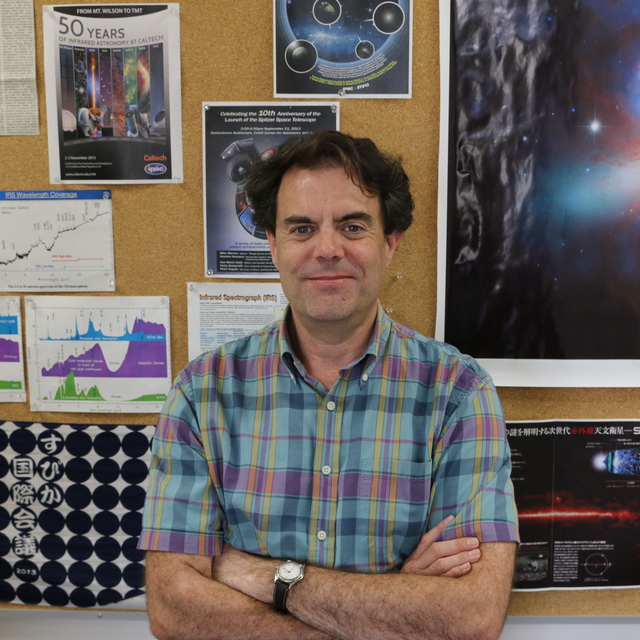December
2019
•
2019ApJ...887..105C
Authors
•
Crocker, Alison F.
•
Pellegrini, Eric
•
Smith, J. -D. T.
•
Draine, Bruce T.
•
Wilson, Christine D.
•
Wolfire, Mark
•
Armus, Lee
•
Brinks, Elias
•
Dale, Daniel A.
•
Groves, Brent
•
Herrera-Camus, Rodrigo
•
Hunt, Leslie K.
•
Kennicutt, Robert C.
•
Murphy, Eric J.
•
Sandstrom, Karin
•
Schinnerer, Eva
•
Rigopoulou, Dimitra
•
Rosolowsky, Erik
•
van der Werf, Paul
Abstract
•
We present resolved [C I] line intensities of 18 nearby galaxies observed with the SPIRE FTS spectrometer on the Herschel Space Observatory. We use these data along with resolved CO line intensities from J up = 1 to 7 to interpret what phase of the interstellar medium the [C I] lines trace within typical local galaxies. A tight, linear relation is found between the intensities of the CO(4-3) and [C I](2-1) lines; we hypothesize this is due to the similar upper level temperature of these two lines. We modeled the [C I] and CO line emission using large-velocity gradient models combined with an empirical template. According to this modeling, the [C I](1-0) line is clearly dominated by the low-excitation component. We determine [C I] to molecular mass conversion factors for both the [C I](1-0) and [C I](2-1) lines, with mean values of α [C I](1-0) = 7.3 M ⊙ K-1 km-1 s pc-2 and α [C I](2-1) = 34 M ⊙ K-1 km-1 s pc-2 with logarithmic root-mean-square spreads of 0.20 and 0.32 dex, respectively. The similar spread of {α }[{{C}{{I}}](1{--}0)} to {α }CO} (derived using the CO(2-1) line) suggests that [C I](1-0) may be just as good a tracer of cold molecular gas as CO(2-1) in galaxies of this type. On the other hand, the wider spread of α [C I](2-1) and the tight relation found between [C I](2-1) and CO(4-3) suggest that much of the [C I](2-1) emission may originate in warmer molecular gas.
Herschel is an ESA space observatory with science instruments provided by European-led Principal Investigator consortia and with important participation from NASA.
Links




